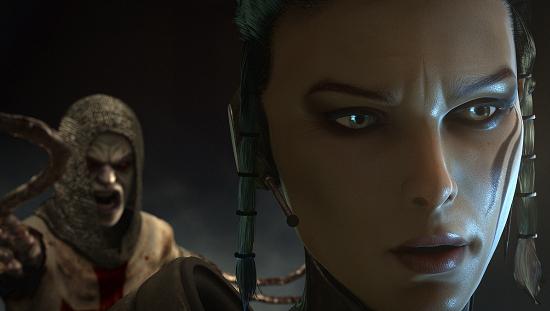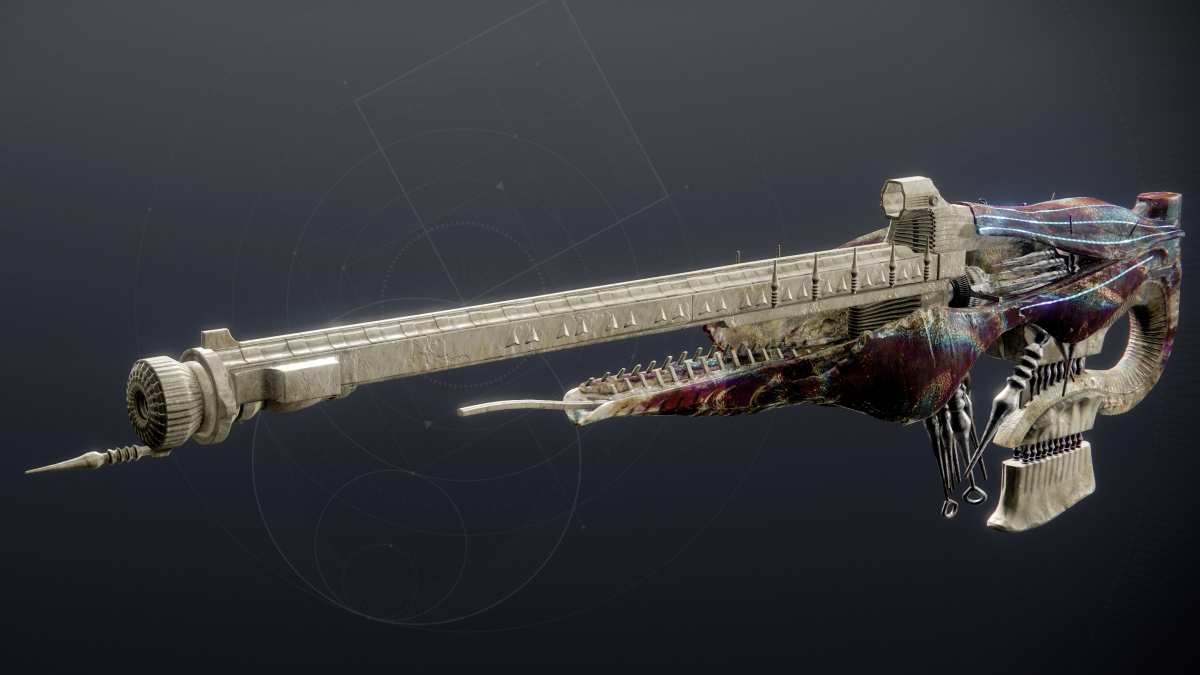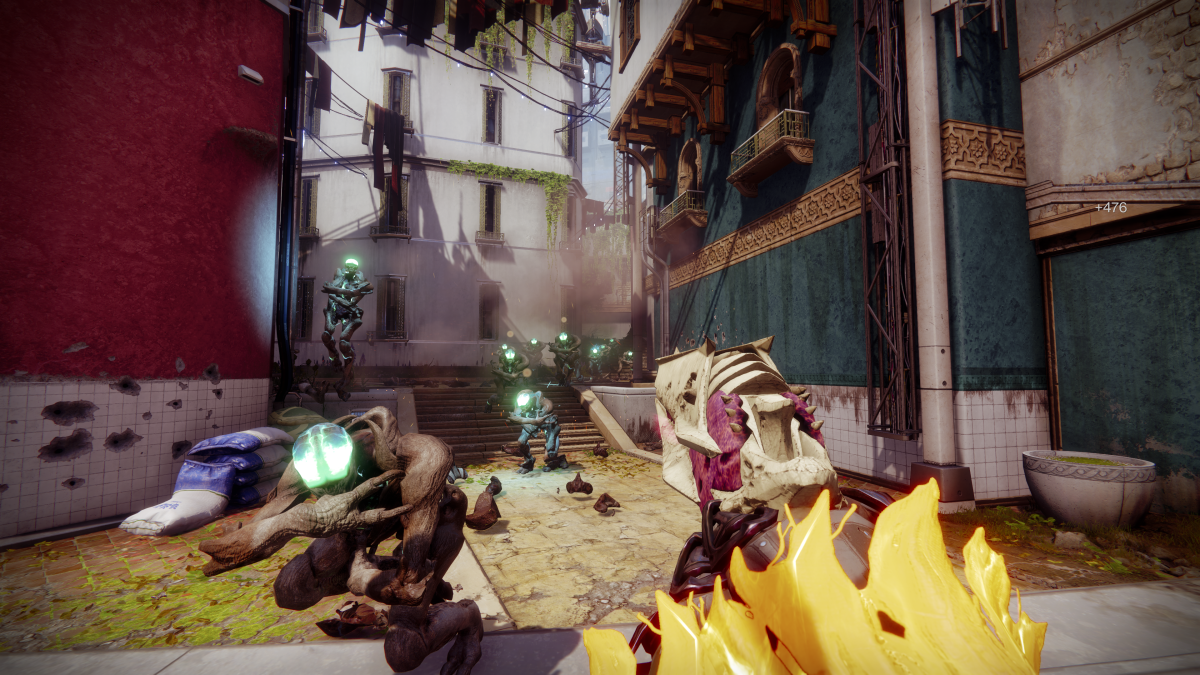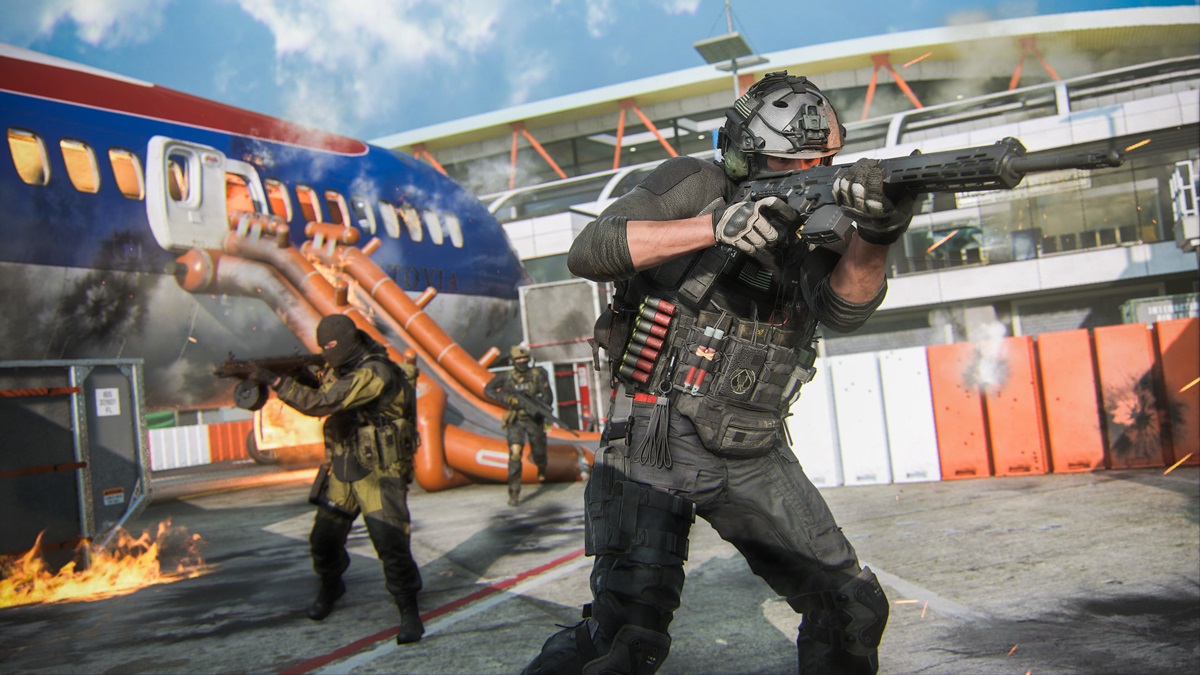Games like Clive Barker’s Jericho really frustrate me. While I’m a highly enthusiastic gamer, and like to look for potential positives in a new title until I’m given reason to think otherwise, when writing about an unreleased game I have to hold back and maintain a degree of journalistic scepticism until the final product is in my hands. Some games hold so much pre-release potential though, that they blow my reservations clean out of the water and play havok with my sense of reservation. Jericho is one of those games.
Hit the jump for my impressions after playing the 360 and PS3 versions, and find out why you really need to be paying attention to this one.
I’d reported on Jericho before I went to see Codemasters, but while excited by the potential of the game, I still had questions.
Clive Barker’s involvement with another videogame was obviously a major draw. His previous dabblings in the medium have yielded far from disappointing results, and his recent impassioned speech on the importance of videogames as a a major artistic medium of the future was an absolute inspiration. Jericho certainly looks the part too, with the screenshots we’d seen previously evoking Barker’s art style of fetishistic mutilation disturbingly well.
I still however, had a nagging worry at the back of my head. As a Barker fan of many years and someone who personally cares about the artistic development of gaming to a massive degree, I couldn’t help worrying that the action-oriented squad-FPS gameplay was going to work to the detriment of the creative talent involved. After all, how do you create a truly disturbing experience through such a gung ho genre? The best horror games are about isolation, desperation and loneliness, so how on earth was a guns ablazing game in which the player has a seven-man squad at their disposal going to be in the slightest bit upsetting? Wasn’t there a worrying probability that Jericho was just going to turn into Quake 4 with a few chains hanging around the place? Well…
‘Visceral’ is the word. No other even gets close to summing up this game, and I’m in no way just talking about the level of gore – though it is excessively high. There’s something wholeheartedly nightmarish about Jericho, and where many abuse that overused term in order to describe anything scary or slightly surreal, I’m using it as literally as I can here.
Real nightmares throw everything at you. Sometimes they’ll be creepy and atmospheric, other times they’ll be out and out gore-fests, and they’ll usually keep switching between the two so as to never even allow you the comfort of getting used to either one. And they’ll always, always wrap everything in a relentless, thick blanket of dense, inescapable dread of something you can’t quite define, but which you can sense surrounds everything you can see and touch. Jericho does that, and it does it horribly well.
As part of Jericho, a military task force for the U.S. Department of Occult Warfare – or rather as the whole of Jericho, but I’ll come to that later – the player is dropped into the area surrounding the Middle Eastern city of Al Khali, the current iteration of a settlement which has been built and ruined countless times over under thousands of years worth of conquerors. The city is cocooned in raging sandstorms, believed to be a result of the work of a local death cult, The Brotherhood of the Dark Rapture. Tensions are high, and the millenia of evil and corruption that have poisoned the land are growing ever more relevant.
Upon reaching the D.O.W.’s outpost in the area, Jericho is first attacked by the Brotherhood, who have now transformed themselves into twisted abominations of their former selves, and then discovers that the city contains a dimensional breach which acts as a passage to its horrific past. It suddenly becomes clear that this sandstorm isn’t just a random meteorological occurrence, and so the squad sets off to return things to normal. Of course, they end up being forced into the rift, and that’s when things really start.
What all of this boils down to is the team battling through five different eras of the area’s history, being thrown back further into the past each time, and ever closer to the original source of the evil saturating Al Khali. This means taking in the present day, World War II. The Crusades, the Roman empire, The Tower of Babel, and eventually 4000 BC, where Jericho will encounter The Firstborn, God’s aborted first attempt at creating humanity. Left unfinished and banished from this reality through its creator’s fear of its power, The Firstborn has been alone in the abyss for millenia, unloved and forgotten, but too powerful to be completely severed from the world it sees as its birthright. And naturally, it’s not taking a submissive approach to its banishment.
I’ll cut straight to the chase here, this game is an assault. Two things typify Clive Barker’s horror. The first is a creeping, psychological unease and strangely compelling sense of abhorrence that gets under the skin and stays there, and the second is an ability to create unapologetically shocking, downright filthy viscerality that won’t let up for a second. Jericho is far further into the latter end of Barker’s output, but compounds the relentless battery with a good dose of the former.
Far from causing the game to lose a sense of fear, the developers at Mercury Stream have used the squad-FPS genre to up the momentum of the attack the player is under, creating a serious sense of impending danger and bombardment from all sides in one of the most immersive horror games I’ve seen in a very long time. The sheer sense of unease in the game’s environments is almost tangible whether Jericho is under attack or not, the powerful lighting effects Orcist recently commented on giving a incredible sense of solidity to scenery and monsters alike, the often warm tones making the air feel thick and choking and adding a heavy, isolated claustrophobia despite the presence of the rest of the team. Boosted by the conversation of the player’s colleagues, the sense of restlessness is constant. The game frequently has the sharp, punchy, and shocking intensity of Barker’s early Books Of Blood collections, and as beautiful as they are, still images just cannot convey the nightmarish density of mood the game drips with.
But while we’re on the subject of the graphics, trust me, as good as those screenshots look, the game in motion is far better. Aside from the lighting atmospherics and the sense of solidity to everything in-game, the monsters and related gore are hideously well-realized. This being a Barker game, extravagant S and M mangling is the order of the day, and every bit of exposed skinless flesh and sinew shimmers with wetness. Think that creeping organic stuff on the walls of Doom 3 looked good? Ha! Jericho’s biological carnage makes that look like Play-doh. The flesh effects are disgustingly goopy and the blood is thick, dark, and dirty-looking. Wonderful stuff! Add that to production design which we were assured was all based on original Clive Barker artwork (Like you’d doubt that after looking at it) and you end up with a game filled with some of the foulest imagery yet commited to a game.
Take for example one of the boss fights we were shown. After battling through an Al Khali under the rule of notorious pervert and cannibal Cassus Vicus, a man so depraved he was exiled from Rome by Caligula for his excess, Jericho find themselves facing off against the sicko. Suspended from the ceiling by heavy chains hooked into his shoulders which leak blood down his entire torso, Vicus has a vast split down the length of his even vaster belly. He plunges his hands deep into the wound, wrenches himself open, and showers the team with all manner of blood and filth from the gash as they attempt to take him down. Icky enough for you?
The sense of player connection to the environment is also fantastic. Taking a leaf out of F.E.A.R.‘s book, Jericho makes great use of bodily awareness from a first-person perspective, the visibility of arms and legs manipulating the environment while climbing rock faces or shimmying down well shafts seriously upping the sense of “being there”. While it’s a simple trick mostly confined to scripted QTEs, it really ups the sense of player involvement in an FPS world past the run/jump/crouch/climb ladder mechanics we’re used to, and used progressively it really boosts the overall sense of attachment to the in-game surroundings throughout play, to the point where I found myself frequently flinching back from attacks despite being in a room full of journalists.
But what of the squad-based mechanics? We were told previously we’d have the option of giving orders or switching between characters to take advantage of each one’s individual powers, but in truth, things go a little further than that. Without giving away any spoilers, the character you control at the beginning is killed early on in the game, but fortunately, that means you can possess your team-mates, giving you access to everyone in the squad equally. The switches are made quickly and easily with just a couple of button presses, and in no time at all you’ll be changing characters on the fly to take advantage of the extra combat options at your disposal.
These range from the simple, such as using the telekinetic Abigail Black to clear rubble from the path ahead, to the much more complex, with some large action set-pieces and boss fights we saw requiring some very sharp use of the whole team as a single unit in order to achieve success. One example was a battle against a forty-foot gladiator who’s only vulnerable point was on his back, Resident Evil 4-style. The trick there was to manually control one team member to draw the creature’s attention while directing the rest of the team to target its weak point, all the while constantly switching character to keep the decoy out of trouble and maintain a constant barrage of fire-power. In another battle, Jericho found themselves in Vicus’ coliseum beset by a small army of ground and air-based enemies, requiring some very quick and careful team-management to keep the swarm under control and Jericho from getting caught in the middle and ending up on the business end of an evisceration.
With powers covering healing, psychic premonition, magical manipulation of environment, exorcism, pyrokinesis, and telekinetic bullet-path manipulation all coming on top of weapon-based attacks ranging from long-distance sniping to close-range katana use, there’s a hell of a lot the team can do, meaning combat in Jericho is a great deal more fun than a simple “Circle-strafe for the win”.
Even for a die-hard keyboard and mouse guy like myself, everything controls very smoothly, and I found myself far happier than I’d have imagined I would be with the console controls. The PS3 version isn’t currently as instinctive in the movement and aiming department as the 360 build, but that might well be down to that console’s floatier analogue sticks than the actual game itself. Also worthy of note is that the depth of color in the PS3 version is once again slightly washed out in comparison to its console counterpart, but hopefully that will be tweaked some more before release. Either way though, it’s still a gorgeous game, and one of the prettiest I’ve seen so far in this generation.
Downsides? The standard of AI is a grey area at the moment. While never glaringly below standard at any point, the sections we got to play were mostly claustrophobic indoor areas which led to a fair bit of monster funnelling and meant that enemy behavior never really got a chance to shine. While combat got a bit frantic in close quarters, there was never any of the much-maligned Doom-style idiot-charging going on on behalf of the monsters, and things were always a lot of fun when there were a good number of the dripping, leather-clad swine for the squad to take on together, so I’ll remain hopeful until I get more time with the game.
Jim’s Take
There’s not much else I can add that David hasn’t already, but I would very much like to confirm everything he has said. Jericho, in the one morning we had with the game, has been able to thoroughly grab me by the nether regions and make me pay attention. It then held onto those same regions tightly until they bled, then tore me open and drank my blood, because that’s Jericho for you — vastly unpleasant, in a sexy way.
Graphically, I was beyond stunned. Much of my time with the game was spent just gawking and saying how obscenely gorgeous everything looked. The way the developers have been able to make things look so … slicked with moisture is amazing. Monsters and bloodsoaked walls look like they’re wet and sticky and it continues to amaze me. Believe me when I say that this game may very well have set a new benchmark for what new-gen graphics can do.
After several years of being quite low key, Codemasters has jumped out of the bushes and attacked us with big sticks of win. Overlord, Turning Point and Jericho all look set to put Codemasters back on the map and I am happily rooting for them. If you weren’t interested in Clive Barker’s latest grisly foray into the realm of gaming, I suggest you start paying attention, because it’s worth it.
Clive Barker’s Jericho is released this fall for PC, Xbox 360 and PlayStation 3.




